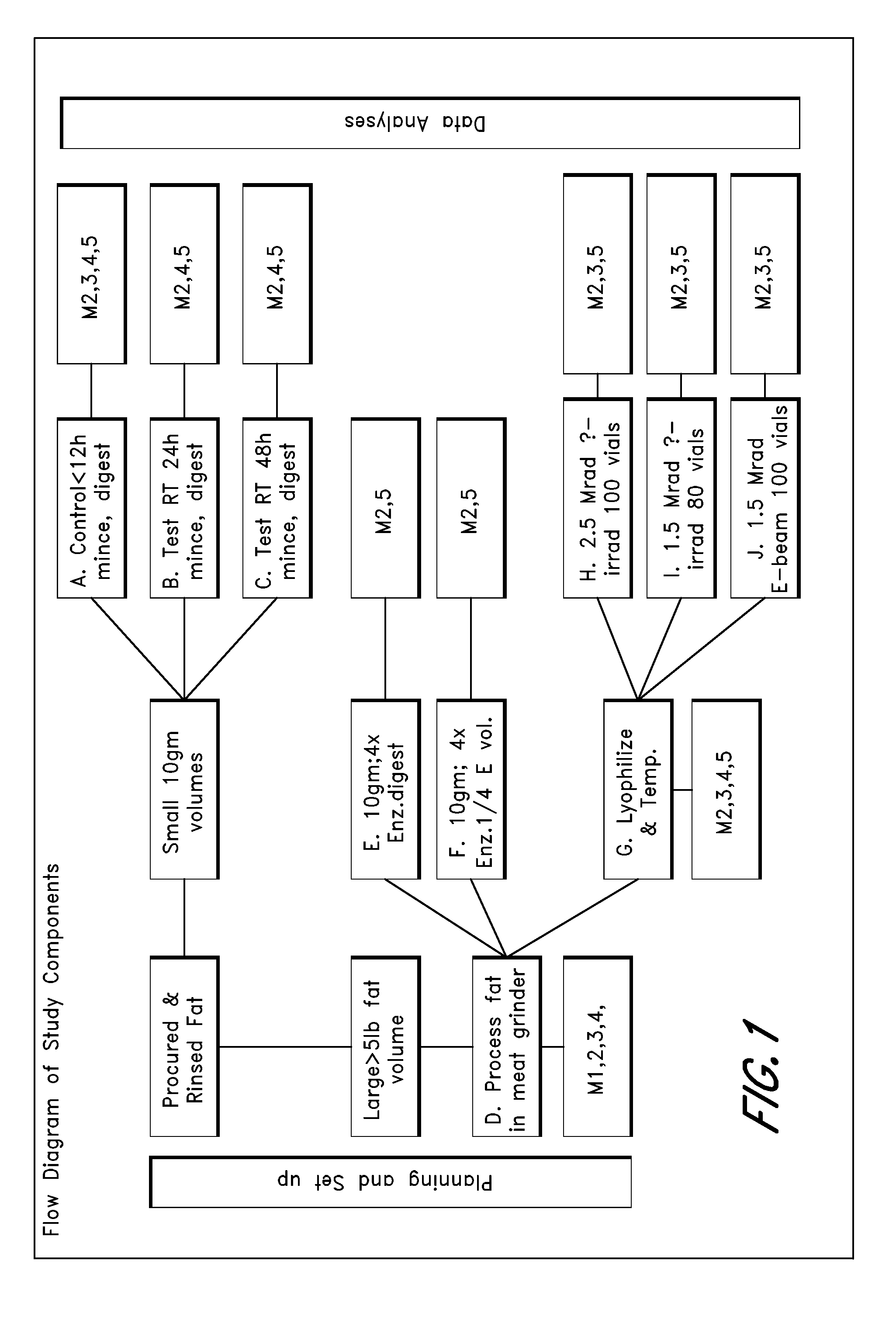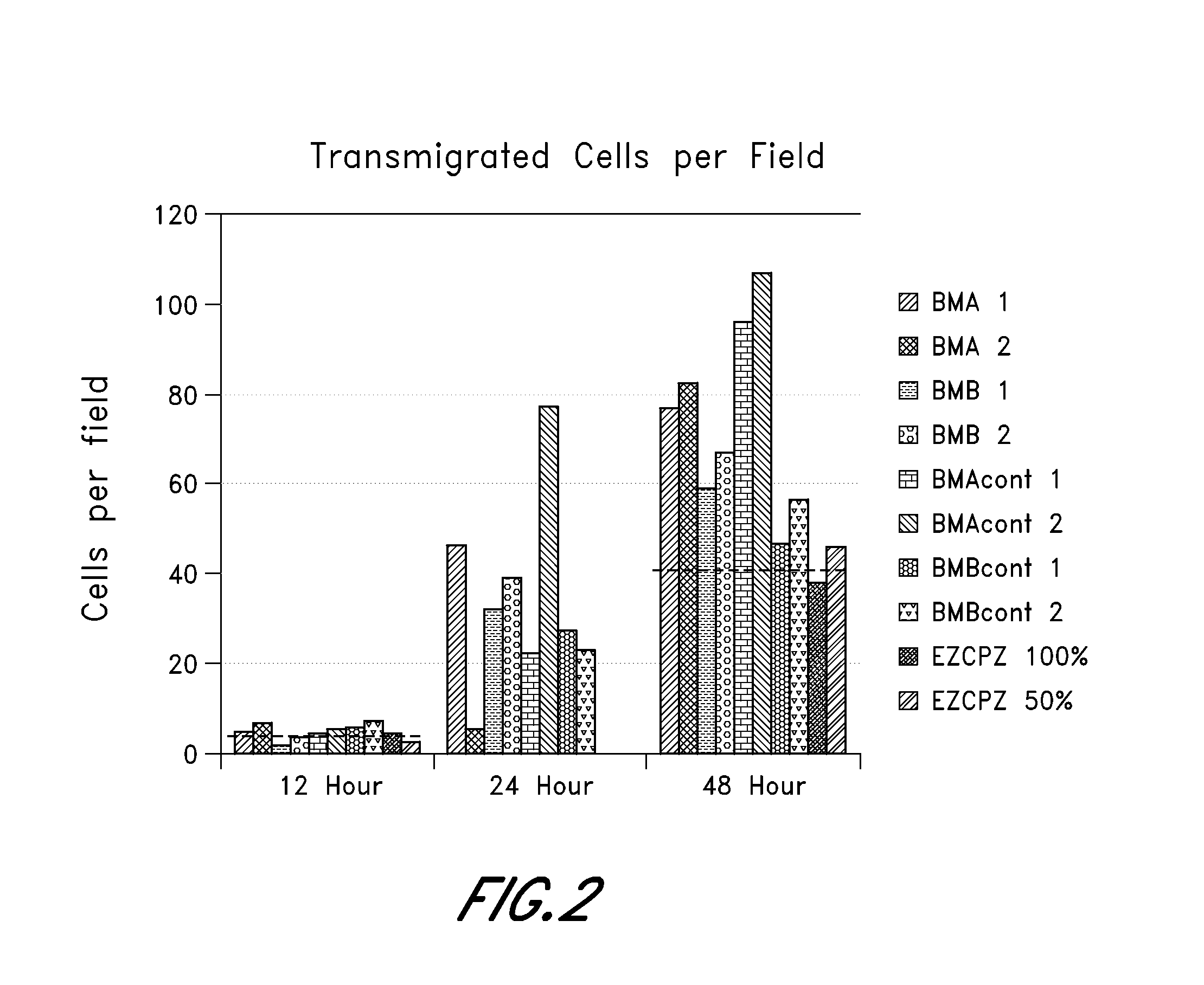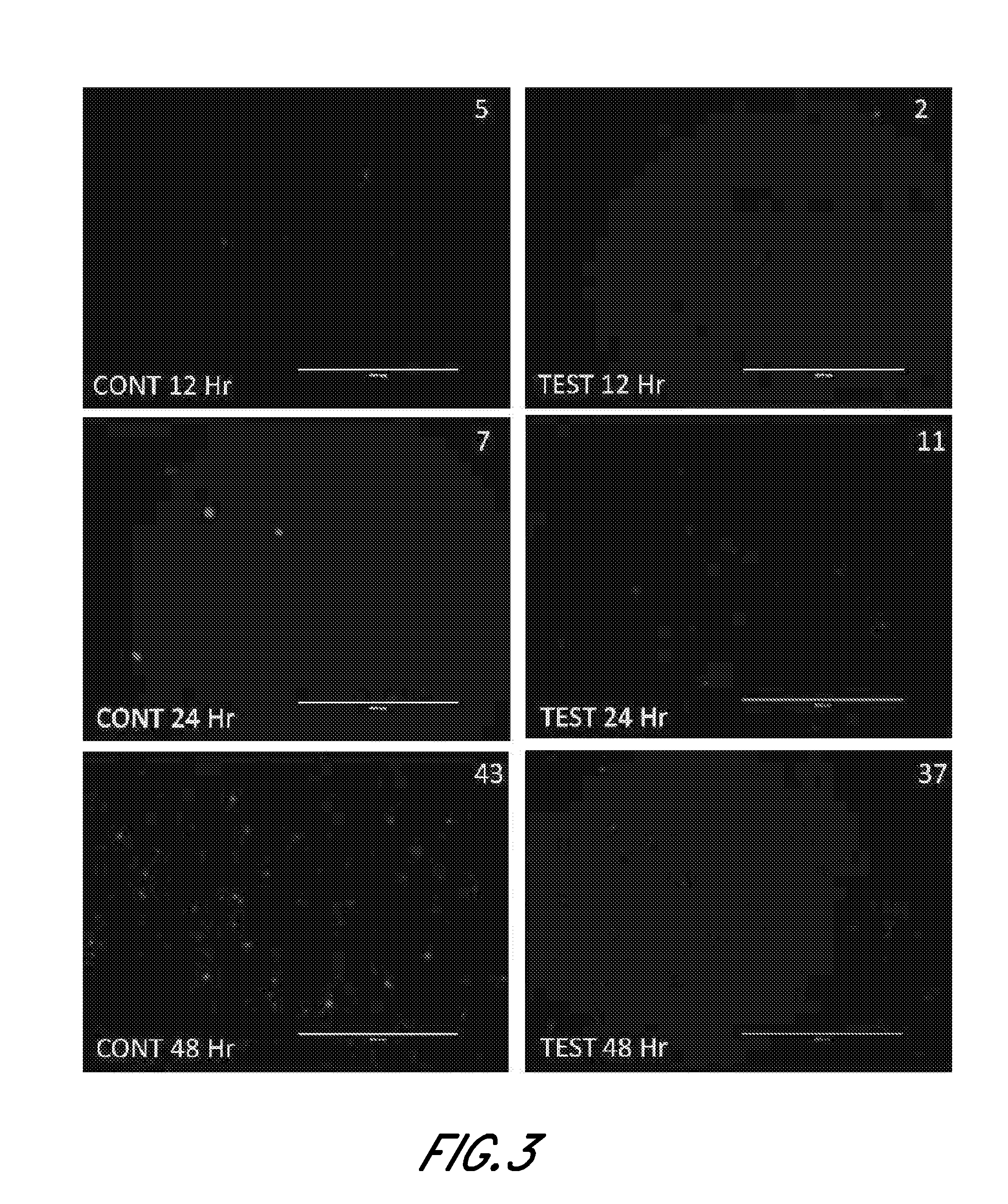Compositions and methods for treating and preventing tissue injury and disease
a technology of compositions and methods, applied in the direction of drug compositions, skeletal/connective tissue cells, prostheses, etc., can solve the problems of tissue dysfunction, achilles tendon tear, and about 15% of achilles tendon and 40% of two tendon rotator cuff repairs subsequently fail, so as to improve tissue growth and migration, promote angiogenesis, and improve the effect of tendon healing
- Summary
- Abstract
- Description
- Claims
- Application Information
AI Technical Summary
Benefits of technology
Problems solved by technology
Method used
Image
Examples
example 1
Microvascular Tissue Preparation and Characterization
[0140]In this study, microvascular tissue is prepared via different processes and then assayed. In brief, at least 5 to 10 lbs of subcutaneous fat is obtained from an organ donor and processed as follows: mince the tissue; enzymatically dissociate it; dilute (no quench), spin, decant and then wash the cell pellet; resuspend in lyophilization buffer; and lyophilization. The base conditions used for processing are as follows: adipose tissue is surgically recovered from a tissue donor. The tissue is minced with scissors, suspended in PBS with 0.2 U / ml CIzyme AS (Vitacyte, Indianapolis, Ind.) at 37° C. with gentle agitation for 60 min, then washed three times and resuspended at two million cells / ml in M3D. The cell suspension is held at room temperature until just prior to lyophilization, when the cells are diluted 50:50 with EZ-CPZ™ cryopreservation media (Incell Corp., San Antonio, Tex.), vialed, and loaded into the lyophilizer tray...
example 2
Treatment of Achilles Tendon Injury in Rats
[0159]This study demonstrates that microvascular tissue preparations of the present invention can be used to repair Achilles tendon injuries.
[0160]32 male Sprague Dawley rats (8 weeks old on DAY 1 and ˜250 g on DAY 1) are purchased from Harlan and acclimatized for at least 3 days. The rats are treated as summarized in the study design of Table 3.
TABLE 3Study Design#Animal / GroupgroupTreatmentRouteEndpoints18Achilles tendon is slightlyRightSurgery- implantabraded with mouse-toothTibiascaffold betweenforcepstibia and28Achilles tendon is slightlyAchilles tendonabraded with mouse-toothTerminationforceps + Tornier's GraftDay 7Material coated withCollagen38Achilles tendon is slightlyabraded with mouse-toothforceps + Tornier's GraftMaterial coated withCollagen + Processedmicrovasculartissue composition A48Achilles tendon is slightlyabraded with mouse-toothforceps + Tornier's GraftMaterial coated withCollagen + Processedmicrovascular tissuecompositi...
example 3
Treatment of Ischemia in Mice
[0187]This study demonstrates the effects of processed microvascular tissue compositions of the present invention in a murine model of limb ischemia. The murine model of limb ischemia is created as previously described (Jang J et al, Circulation 1999; Huang N et al, JOVE 2009), and is used to assess the effects of cell preparations in promoting angiogenesis after induction of hindlimb ischemia.
[0188]SCID mice 14-16 weeks old undergo surgically induced hindlimb ischemia. Immediately after surgery, processed microvascular tissue composition or vehicle control will be administered to the animals as detailed in Table 4 below. Briefly, three test cell articles (each at 0.5×106 cells) or vehicle control are injected intramuscularly on day 0 after induction of hindlimb ischemia into the gastrocnemius. The three test articles include: processed microvascular tissue composition (Test Cells-I), processed microvascular tissue composition sterilized by E-beam (Test ...
PUM
| Property | Measurement | Unit |
|---|---|---|
| time points | aaaaa | aaaaa |
| time points | aaaaa | aaaaa |
| pore size | aaaaa | aaaaa |
Abstract
Description
Claims
Application Information
 Login to View More
Login to View More - R&D
- Intellectual Property
- Life Sciences
- Materials
- Tech Scout
- Unparalleled Data Quality
- Higher Quality Content
- 60% Fewer Hallucinations
Browse by: Latest US Patents, China's latest patents, Technical Efficacy Thesaurus, Application Domain, Technology Topic, Popular Technical Reports.
© 2025 PatSnap. All rights reserved.Legal|Privacy policy|Modern Slavery Act Transparency Statement|Sitemap|About US| Contact US: help@patsnap.com



